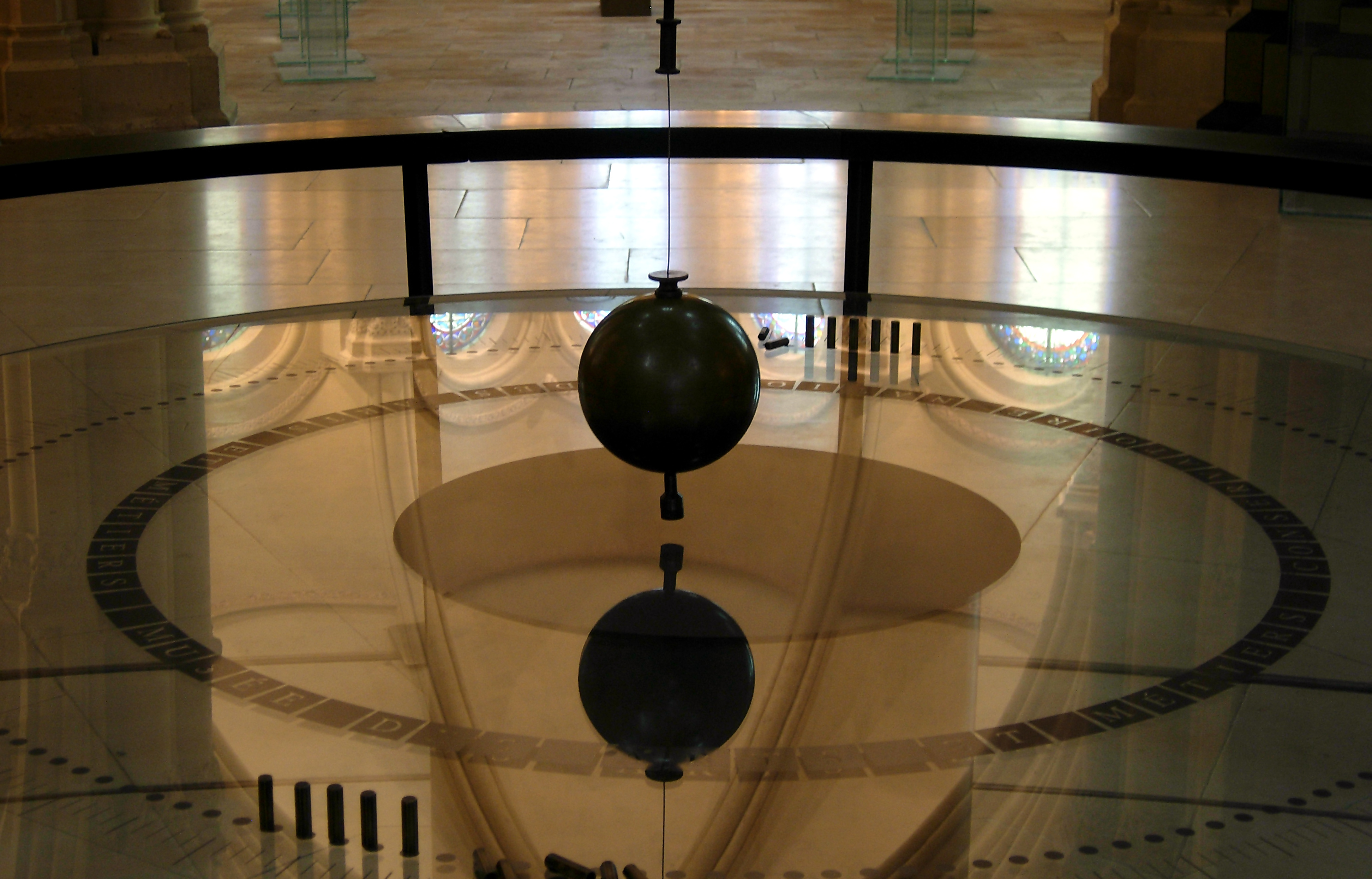
views
One notable feature of the recently inaugurated new Parliament building in New Delhi is the presence of a Foucault pendulum, which is suspended in its ‘Constitutional Gallery’ section. The design and installation of this pendulum were undertaken by the National Council of Science Museums (NCSM) located in Kolkata.
What exactly is the Foucault’s pendulum and why has it been installed in the new Parliament building? News18 explains:
Foucault's Pendulum installed by @ncsmgoi at the new Parliament building on May 28, 2023.#AmritMahotsav #MyParliamentMyPride @PMOIndia @MinOfCultureGoI @AmritMahotsav @kishanreddybjp @M_Lekhi @arjunrammeghwal @secycultureGOI @PIB_India @PIBCulture pic.twitter.com/YAaZ3NRnSB— National Council of Science Museums-NCSM (@ncsmgoi) May 29, 2023
The original Foucault’s pendulum, named after the 19th-century French scientist Léon Foucault, is a simple experiment aimed at demonstrating the rotation of the Earth. When Foucault conducted this experiment in 1851, it provided the first direct visual evidence that the Earth rotates on its axis.
What is the Foucault’s Pendulum?
The Foucault pendulum is a captivating scientific apparatus consisting of a heavy mass suspended from a long cord, allowing it to swing in any direction. Interestingly, it also rotates in relation to the Earth’s surface, as per Britannica.
Back in 1851, the French physicist Jean-Bernard-Léon Foucault created the first of these pendulums in Paris. One example featured a 28-kilogram iron ball suspended from a 67-meter steel wire inside the dome of the Panthéon. By initially pulling the ball to one side and then releasing it, Foucault set it in motion, causing it to swing in a specific plane. The remarkable thing about Foucault’s pendulums was that they demonstrated, in a laboratory setting, the Earth’s rotation on its axis.
How Does it Work?
According to the Britannica report, a Foucault pendulum is a fascinating apparatus that swings in a back-and-forth motion within a specific plane. However, the Earth rotates underneath it, creating relative motion between the two.
At the North Pole (latitude 90° N), when viewed from above in the plane of the pendulum’s suspension, the Earth appears to rotate counterclockwise once every 24 hours (to be precise, once every 23 hours 56 minutes 4 seconds, which is the length of a sidereal day).
Consequently, the pendulum’s plane, also viewed from above, seems to rotate clockwise once a day. In the Northern Hemisphere, a Foucault pendulum always rotates clockwise, with a decreasing rate as its location gets closer to the Equator. The original Foucault pendulums in Paris, for example, rotated clockwise at a rate exceeding 11° per hour, taking approximately 32 hours for a complete rotation. The rotation rate depends on the latitude. At the Equator (0° latitude), a Foucault pendulum does not rotate, while in the Southern Hemisphere, the rotation is counterclockwise.

The mathematical expression for the rate of rotation of a Foucault pendulum is equal to the rate of Earth’s rotation multiplied by the sine of the latitude. Since the Earth completes a 360° rotation in approximately 24 hours (a sidereal day), its rate of rotation is about 15° per hour.
This corresponds to the rotation rate of a Foucault pendulum at the North or South Pole. For instance, at a latitude of 30° N (e.g., Cairo or New Orleans), a Foucault pendulum would rotate at a rate of 7.5° per hour, as the sine of 30° is equal to one-half. In essence, the rate of rotation of a Foucault pendulum at any given location matches the component of Earth’s rotational speed perpendicular to the Earth’s surface at that specific point.
What About the Foucault’s Pendulum in the Parliament?
According to The Hindu, the recently installed pendulum in the new Parliament building was created by the National Council of Science Museum (NCSM) in Kolkata.
The pendulum stands at a height of 22 meters and weighs a massive 36 kilograms, making it the largest of its kind in India, as reported by the Indian Express.
A Moment of Pride for @ncsmgoi !A Foucault Pendulum has been installed by @ncsmgoi at the new Parliament building on May 28, 2023.#AmritMahotsav #MyParliamentMyPride pic.twitter.com/LPtA1ddN4W
— National Council of Science Museums-NCSM (@ncsmgoi) May 29, 2023
It takes the pendulum a total of 49 hours, 59 minutes, and 18 seconds to complete one full rotation.
Tapas Moharana, the person in charge of the project, told the Indian Express that all the components of the pendulum were manufactured in India.
Moharana took approximately 10 to 12 months to create the pendulum after receiving a call from the Central Public Works Department (CPWD) last year, inquiring about the possibility of such a creation.
The pendulum has been constructed using gunmetal and is equipped with an electromagnetic coil to ensure smooth movement, Moharana added.
As mentioned in The Hindu, setting up such a pendulum is a challenging task as one must strive to ensure that its motion is primarily influenced by gravity alone.
The newspaper also reported that the first public installation of a similar pendulum was commissioned by Pune’s Inter-University Centre for Astronomy and Astrophysics in 1991. The NCSM later installed another pendulum of this kind at the Queensland Science Museum in Brisbane.
E Islam, who worked on these installations and later headed Kolkata’s Birla Industrial and Technological Museum, was quoted by the newspaper, “As expected from theory, the pendulum at Pune apparently turned 4.86º per hour clockwise, while in Brisbane it turned 6.92º per hour anticlockwise. The success of our new design was thus unmistakably established by experimental results from both hemispheres.”

















Comments
0 comment